World of Tanks Generals First Impressions
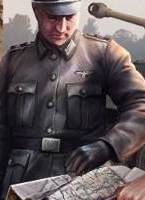
TBD
Overall Score
More strategic combat utilizing good cards, luck, and chess-like strategy. Playable in your web browser.
No booster pack mechanic takes away one of the big things we love about these kinds of games. The graphics are a little simple and lack a lot of flair other card games have.
We were privileged to get a chance to check out the closed beta of the new turn-based web browser card game from Wargaming, World of Tanks Generals, a slight shift from the typical action shooter MMO we are used to seeing from the developers, but a welcomed change as we do love a good TCG (although not explicitly TCG as you can’t trade with other players, but you get the idea). The game has managed to combine both the tactical elements of a classic card game and some features of their own shooter genre to create an intriguing MMO that we were excited to get our hands on.
The game in many ways plays the same as other card games, players have a hero, or in this case a Headquarters, which has hit points and the objective of the game is to destroy the Headquarters by removing all those hit points. This can be done by a variety of means from making a direct attack from your HQ, playing a number of action cards that deal direct damage (similar to spell cards) or, more commonly using your Tank Unit cards to try and dominate the battlefield that lies between you and your enemy. The battlefield itself is a 5 x 3 grid, at opposing corners the player HQs are placed giving three adjacent tiles in which units can enter the battlefield from and, under normal circumstances, tanks can move one square horizontally or vertically and attack adjacent tiles be that other tanks or the HQ itself.
The main strategy comes in playing and directing your units on the battlefield, where most card games utilise some form of positioning mechanic, even the ability to switch positions, World of Tanks Generals allows for full movement making the game more like a chess match in comparison to other card games that are available where there the strategy lies more in playing the right card at the right time. Like chess the different pieces/units each have their own unique traits, Light Tanks can move two squares whereas Medium Tanks still only have their one square movement range but can move diagonally, and so positioning and manoeuvring is as important as having powerful cards as once a players HQ is surrounded they are unable to place cards onto the battlefield. Second to this is damage, every Tank Unit has an attack value to determine how much damage it will do in either an attack or an instant counter attack (which is made when an adjacent enemy unit attacks it) and an armour value to determine how much damage it can take. However once again with the different types of tanks this changes up slightly, Heavy Tanks cannot counter attack once they have attacked, but they have a lot of hitpoints, Tank Destroyers will attack first and if the damage is enough to destroy a tank will not take counter attack damage, whereas an SPG has a weak yet long range attack that can target any enemy that is adjacent to an ally. Lots of different options.
As ever a game is changed up further by action cards that allow players to heal up their HQ from any damage it has taken, or even tank units in the field, or using special abilities like adding extra resources, camouflaging units, drawing extra cards, etc. all of which act like traditional Spell cards from other systems. Players can draw and place Infantry cards that enter slots for the HQ, similar to Artifact cards in other systems, which will give the HQ added defences and attack power for a certain number of rounds.
We played quite a few games to get to grips with the mechanics, trying out the different starter divisions/nations and the default cards; we had a press account with millions of credits, XP and tokens to get pretty much any deck/cards we wanted but great cards are only useful with great strategy and it would be no fun fighting other low ranked players with an epic deck, well… maybe it would be a little fun, but it wouldn’t give us a good idea of how balanced the game was. From the outset it isn’t totally obvious what the differences between the different nations are, in other games the Factions you might have generally have more obvious themes such as Necromancers being able to bring their casualties back from the dead or Barbarians building up rage for added damage bonuses. We managed a good few games and pretty much got battered in all but one of them (go USSR!), and other than differently named tanks with different artwork and slightly different stats there was no obvious difference between the different decks.
The change, in many ways, comes as players start developing their nation/division/deck by utilising the Research tree. This is one of the core elements of the game and one of the most interesting and, as far as card games go, relatively unique to the genre as far as we are aware. The developers have managed to mix in an almost class-based talent tree for each of the nations; players will earn XP through playing matches as well as the different quests/achievements that are available and they get to spend this XP to unlock new technologies in the Research tree, and as expected the technologies become more and more expensive the further into the tree you delve. With each technology unlocked players gain access to a new card and are able to purchase that card with in game credits, the currency that is constantly acquired through the same means as gaining XP, able to purchase up to 3 cards of the same type to put into their deck of 40. It ties in the class-based shooter and research trees of the other Wargaming games and a fairly novel system to acquire new cards for deck building, with each nation having its own research tree it’s here we start to see how the nations can differ from each other.
With this system acquiring cards becomes more a strategic choice as players can choose the route they wish to take in the research tree to acquire a specific card, helping plan out their deck ahead of time they have a lot more say in its final design. Whilst cards are purchased with credits and credits can be purchased with tokens, the games Premium Currency, it does manage to avoid the Pay to Win element by ensuring that gaining access to the cards in the first place is only done through XP, which requires actual game play (albeit tokens allow you to purchase XP boosters, but it’s all just convenience as opposed to easy access). The system takes down many of the barriers that other traditional card games have, where players struggled to get the cards that they want and are forced to play with whatever random filler cards they have available until they can be replaced.
Whilst the system has its pros there are two major cons that we feel really take away from the game, firstly is the fact that as anybody can build their desired dream deck it is highly likely that as the game develops people will simply mimic the same decks as the high-ranking competitive players (albeit with the chess like strategy required simply having a good deck doesn’t make you a good player). Whilst this isn’t uncommon in any card game and certain deck builds become quite famous, building them has always been more difficult given that cards are typically more random in how they are acquired; which takes us onto the second and biggest drawback: there are no booster packs.
One of the most fun elements of card games is buying the booster packs and the excitement of seeing which cards you have managed to get, always hoping for a rare/legendary to appear and working an entire deck around it. Even coming across someone else with a legendary card in a game and your mind being blown at seeing it is always pretty exciting even if it leads to your downfall; World of Tanks Generals doesn’t have that, any card you get or see… you know how someone got it; by spending a lot of time playing. Here in lies the main difference, the game isn’t really a card collecting/card trading game and so players need to get out of that comparison mind set, it is a strategic card game where as much of the random element has been taken out of the mechanics on purpose, and whilst we understand why, and definitely makes the game more original, it does balk in the face of what many players of the genre love the most. Overall a fun little game that’s definitely going to have its own place in the genre, but we’ll have to wait and see if it’s just a little too different for most players tastes or not.
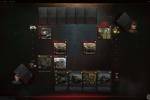
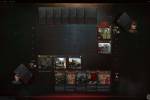
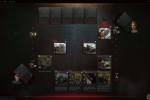
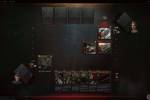
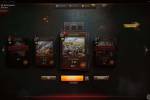
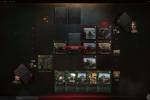
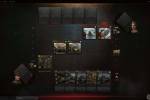
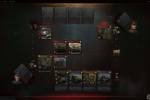














The game is quite nice, but unfortunately very unfair. Old players (beta phase) can use some overpower cards, new players will never have (they were removed from the game). Nothing will change that, no matter how many hours you will play, or how much money would you like to spend. You are new, and you are screwed from the start.
Sad.